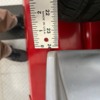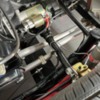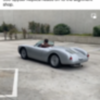Hi everyone. I have a JPS Spyder with a 2332 motor and a Prostreet transaxel. Wide 5 wheels, stock height for a spyder. On the way to my in person BAR appointment to get the SB-100 finalized I started hearing a noise I thought was the clamshell pins creaking. (Got my sticker, back to DMV today for plates finally!!)
Anyway, got home and found the rear wheels had shifted to the Passenger side. So the Passenger side wheel is a little over and inch outward, and the drivers side wheel is the same distance inboard now, which was rubbing the fiberglass of the inner fender well of the clamshell. I have looked and couldn't find anything on line about this. Does anyone know if this is a common thing for these cars if they are driven hard-ish ( I'm hoping these aren't just parade cars).
So, either the axels shifting in the transaxel, or does the entire rear end shift on the tubular chassis?? I did rally it a bit on the way home over the mountain pass and it was driving fine. I thought first thing to do is jack up the rear end and see if it would shift back but I know its not going to be that simple. Any Ideas or similar occurrences? Thanks and enjoy your Holidays!











